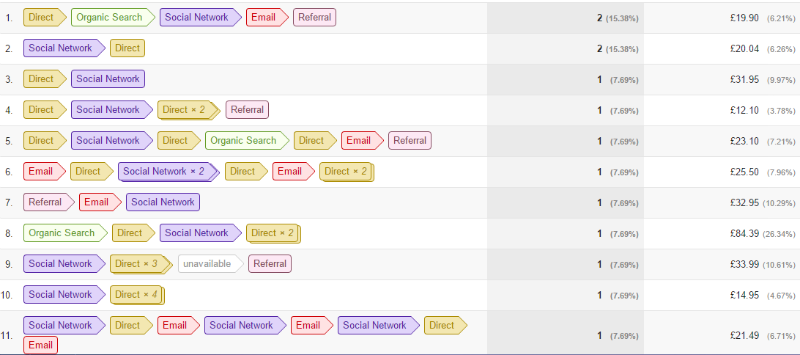Should we be talking about Social Media ROI?
Social media marketing is a hybrid. Word of mouth meets traditional advertising. It is both a means of enabling brand advocates to talk about you and a means of you promoting your news, products/services and offers to your audiences.
No one ever asks for word of mouth ROI
With that in mind, should we be talking about social media ROI? Neither word of mouth nor traditional advertising are expected to demonstrate ROI. They are measured by reach, visibility, footfall, market share, brand awareness and so on. Since social media marketing is a combination of these two marketing methods surely it should be held to the same standards? You can’t measure the ROI of this conversation…

Whilst the person at the other end of the phone may be more inclined to trust the retailer it doesn’t mean that they have an immediate need for a new dress or the money to purchase one. They might search for the brand weeks or months later in order to buy. The same goes for social media.
Advertising is about being where your target customers are
That is why you’ll find Argos posters on bus stops, but you can’t measure the ROI on that – especially if it is on the bus route out of town, away from the shop. A potential customer will see it but it cannot drive them to immediately buy; they are travelling away from the shop.

With a study showing that in Europe 16-64 year olds spend approximately 5.9 hours per day on the internet, versus 2.9 hours watching TV and 0.5 hours reading traditional press it seems logical to be investing in digital marketing more heavily than other channels. Combine that with the fact that 68% of European 16-64 year olds visited YouTube and 79% visited Facebook in a month, during Q1 2015. Furthermore, in Q2 2015 in the UK 32% of the 7,512 surveyed 16-64 year olds visited Twitter and 16% visited Instagram in a month. It is safe to say that your average eCommerce retail customer is visiting social networks on a regular basis. So that is where you want to be seen.
How should we measure Social Media?
Digital marketing can have a hard time of it, because of the sophisticated attribution methods and analytics packages available it is expected to deliver a last-click ROI for every penny, particularly in eCommerce. Unfortunately, customers are complicated, they don’t buy something as soon as they see it or even the first time that they add it to their basket. To rub salt in the wound they don’t visit a website from the same source each time, so which channel should get credited with the revenue for ROI?
Here is a snapshot of conversion paths that include social media. Notice that only twice is social media the final point of contact before conversion.

So is social media pointless? Definitely not. In the above examples at least 1 visit via social media contributed to the customer’s decision to buy. But you cannot prove the ROI of the social media marketing activity that contributed to these sales.
Therefore, I would consider the following metrics as worthwhile for measuring the value of eCommerce social media marketing:
- Brand reach – the number of followers/likers etc., re-posts and account mentions
- Referral traffic – using tracked links to differentiate between your activity and organic social referrals
- Assisted transactions and revenue
Follow my contributions to the blog to find out more about social media strategy, or sign up to the ThoughtShift Guest List, our monthly email, to keep up-to-date on all our blogposts, guides and events.

